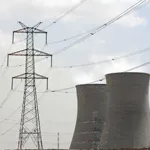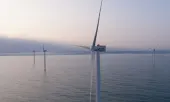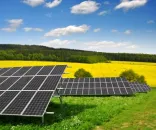
An improved energy mix for China
According to China’s National Energy Administration (NEA), the country is likely to continue reducing investment into coal fired power plants as the lower than normal economy may result in a power glut this year. However, with the future in mind, China will build more nuclear reactors and wind farms to improve its energy mix.
The NEA has reported that the country’s energy strategy will mean that investment into the power industry is expected to reach RMB 580 million yuan this year. However, in its power investment forecast published on February 14, the China Electricity Council (CEC), said that investment may hit RMB 650 million yuan this year, encouraged in part by the Chinese governments RMB 4 trillion economic stimulus package.
The forecast by the CEC says that investment in power generation may remain around RMB 300 billion yuan, with more of it going to sectors such as nuclear power while the remaining RMB 350 million yuan will be assigned to build and upgrade the country’s power transmission grids. The CEC have also commented that electricity demand will remain weak this year, but it is likely to rebound in the second half and may increase by five percent this year. Large scale energy projects require huge investments and could give a boost to manufacturers and raw material suppliers. Reports state that construction will begin of a series of nuclear power plants with a total capacity of 8.4 GW this year alone. Some of the nuclear projects are in Sanmen in Zhejiang Province, Taishen in Guangdong Province and Haiyang in Shandong Province.
In 2009, China will build several large wind power farms over the next ten years, each with a reported generating capacity in excess of 10 GW in Gansu and in Heibei Provinces and in Inner Mongolia autonomous region. It is generally felt that the oversupply of electricity this year offers a good opportunity for the industry to optimize its power generation capacity by closing small polluting power plants. Reports say that the NEA will attempt to phase out small power plants with a total power capacity of 13 GW during 2009. According to sources close to the NEA, China may soon revise its energy development plans to nearly double its nuclear power capacity in the next decade. The country will start building eight more nuclear plants in the next three years, with 16 reactors whose total installed capacity will surpass 10 GW. There are currently 11 nuclear reactors in operation in the country with a combined capacity of some 9 GW which is supplying about one percent of China’s energy needs. The NEA has said that China will raise the share of nuclear power in the nation’s energy mix from 4 percent in 2006 to 5 percent in 2020. The revised energy plan aims for nuclear power to generate 70 GW by 2020.













 Advertise
Advertise











